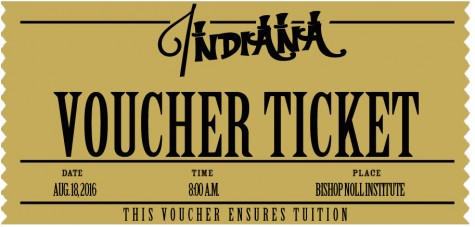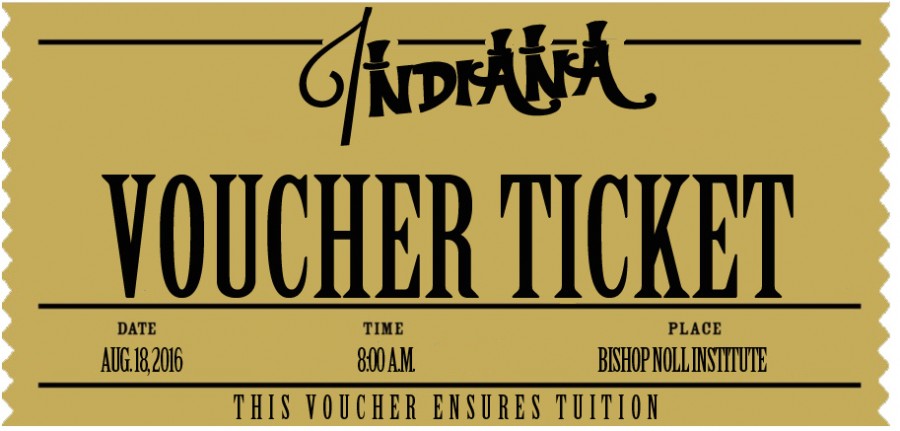The debate over Indiana’s voucher continues to get heated–especially around election time, but do vouchers really hurt public schools as much as critics say they do?
April 29, 2016
 It has become a dream for parents to send their child to a good school that will help expand their knowledge, develop them ethically, and give them the same opportunity as every other student. Some parents would rather have their child attend a private institution to receive their education and others prefer the public education. Through the Indiana Choice Scholarship program, also known as the voucher program, Indiana students have the financial ability to choose a school that they believe is right for them.
It has become a dream for parents to send their child to a good school that will help expand their knowledge, develop them ethically, and give them the same opportunity as every other student. Some parents would rather have their child attend a private institution to receive their education and others prefer the public education. Through the Indiana Choice Scholarship program, also known as the voucher program, Indiana students have the financial ability to choose a school that they believe is right for them.
Following an arduous 2011 court battle with the teacher’s union over claims that the Indiana Choice Scholarship conflicted with the Indiana state constitution, governor Mike Pence established the program allowing parents to decide whether they want their tax money going to a public school, or whether they want assistance in sending their child to a private school. The program is one of Indiana’s fastest growing, with its budget more than doubling from 2014 to 2015.
Since then, the voucher program has been hugely successful in Indiana, especially with religiously affiliated schools. During the 2015-2016 school year, 32,686 students in Indiana received vouchers, making Indiana the largest promoter of the choice scholarship in the country. According to Barbara O’Block, Diocese of Gary Superintendent, about 2200 students in the diocese’s 20 schools receive some money from the Indiana Choice Scholarship.
At a State House rally on Jan. 25, Gov. Pence said he’d like to see expansion of the program.
“I will continue to stand with policy makers and parents and teachers and educators,” he said, “to keep Indiana at the very forefront of states that are expanding choice.”
However, in the face of growing opposition to the program, the Indiana Choice Scholarship may not see the expansion Pence wants if he isn’t re-elected.
In a Friedman Foundation Statewide, 69- percent of Hoosiers–including state superintendent Glenda Ritz and many Democrats–favor the voucher program, so why the opposition? Are vouchers really hurting public schools? Critics of the voucher system believe that it is not only wrong to provide financial aid to private schools based on the idea of separating religion from state, but also because private schools are taking away the higher performing students, causing Indiana public test scores to lower.
Many local public school administrators are against the voucher program. In a March 15, 2015, article in The Times, interim Merrillville superintendent Tony Lux said, “what’s happening is that limited state tax dollars are being diverted from public school funding — that could be used to educate students of poverty — to subsidize families on the basis of religion.”
Public data, however, differs. According to data pulled from the U.S. Census Bureau, the Friedman Foundation, the nonprofit organization that promotes school choice, found that per-student spending in both Milwaukee and Cleveland increased over 50-percent in real dollars in the 15 years since their voucher systems’ inception.
This same study on the school choice program in Milwaukee — the first U.S. city to institute a voucher program, in 1990 — found that students were one to two years behind academically before acquiring a voucher. Twelve out of 15 studies done by the University of Arkansas experts found that voucher students showed significant gain in academic achievement, were more likely to graduate high school in four years, and were more likely to enroll in a four-year college than students who didn’t get a choice of schools.
According the Friedman Foundation, the amount of funding distributed by the government distributed to all schools should be based on enrollment. Right now, 87-percent of America’s youth are enrolled in public schools and 10-percent are enrolled in non-public schools. Three-percent of students are home-schooled. Therefore, they would like to see 10-percent of funding should go to non-public schools and 3-percent should go to home schools.
“As enrollments change—based on families’ choices—so too should the funding. The purpose of public education is to educate the public. Thus, we should care more about students being educated, and less about the settings their parents choose. After all, successfully educated public, private, and home-school students all contribute to the public good,” the Friedman Foundation website says.
Critics of private institutions who take state money also argue that private schools aren’t subject to as rigorous government oversight as public schools. However, nonpublic schools in Indiana that receive voucher money must comply with Indiana standards. Each school must be accredited by a state board or national agency, comply with health and safety codes, administer testing and submit reports, be at a stage grade of C or above, and grant the state full access to its premises.
Out of 536 students in Bishop Noll, 258 use the voucher program. Nancy Repay, director of admissions Bishop Noll, stated that without the program, “it would be difficult for these students to attend.” She appreciates the sacrifice that Noll families make in choosing to send their children, even if they are on the voucher program, and stated that the school is “constantly looking for more scholarships for our students”.

